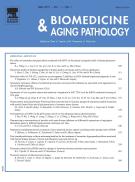Photoaging: New insights into its stimulators, complications, biochemical changes and therapeutic interventions - 18/09/13
Abstract |
Human beings are constantly exposed to UV radiations emitted by sun. Prolonged exposure to UV radiations initiates a series of pathophysiological events that account for photodamage in skin. Photoaging is the major contributor of skin melanoma and risk is particularly seen higher in fair skin population, with approximately 80 to 90% of European and North American population prevalent to skin photoaging. Importantly, skin cancer due to sun exposure is the most leading type of cancer prevalent in New Zealand; with approximately 67,000 new cases diagnosed every year with skin cancer. In fact, photoaging-associated skin cancer accounts for more than 65,000 deaths worldwide every year. This current and impending burden of the affected individuals provokes the need for further insight into the biochemical changes that contribute to the pathogenesis of skin cancer due to UV radiations and future therapeutic interventions to prevent and treat the associated skin disorders. On exposure to UV radiation, there is the generation of reactive oxygen species, reactive nitrogen species and inflammatory mediators. It also increases DNA damage in the body. All these factors together lead to degradation of collagen, and finally results in formation of wrinkles and angiogenesis which are the major clinical manifestations of photoaging. Further, UV radiations cause decrease in Langerhans cell, melanocyte, keratinocytes, fibroblast, collagen, tissue inhibitor of matrix metalloproteinase, various endogenous antioxidants and increase in level of various cytokines. Therefore, by understanding the molecular mechanisms underlying photoaging, new therapeutic managements can be identified and discovered.
El texto completo de este artículo está disponible en PDF.Keywords : UV radiation, Photoaging, Skin cancer, Antioxidants, DNA damage
Abbreviations : MYD88, TOLLIP, IRAK-1, TRAF-6, TAB1, TAK1, FADD, TRADD, TRAF-2, RIP, MEKK-4, MMPs, ASK-1, TBRII, EGF, EGFR, Grb 2, SOS, P120-GAP, Ral-GDS, Beta-PIX, PI3K, PKC, NER, BER
Esquema
Vol 3 - N° 3
P. 161-169 - juillet 2013 Regresar al númeroBienvenido a EM-consulte, la referencia de los profesionales de la salud.
El acceso al texto completo de este artículo requiere una suscripción.
¿Ya suscrito a @@106933@@ revista ?


